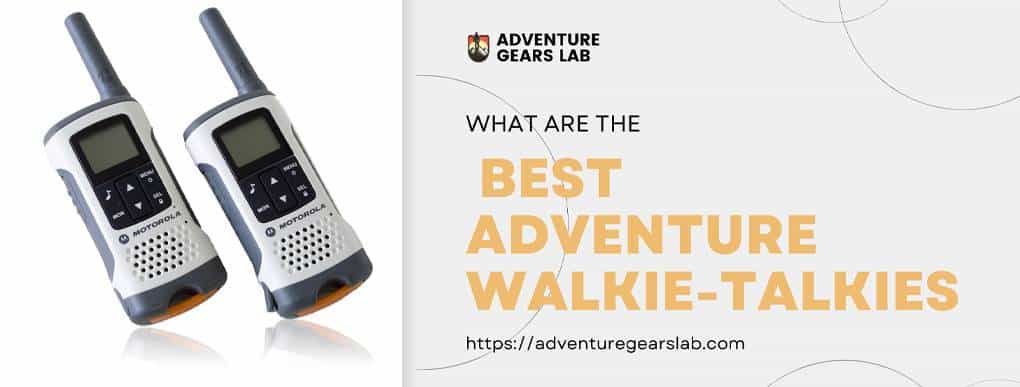When looking for a bike, comfort is probably the most important consideration: the more comfy the bike feels, the longer you are likely to keep riding.
Comfort goes hand in hand with the size of the bike. A bike that is too big will eventually become uncomfortable and potentially unmanageable.
A bike that is too small is also uncomfortable and will frustrate you in the long run. In this article, we are going to show you how to size a mountain bike for maximum comfort.
Measuring Yourself Against the Bike- How to Size a Mountain Bike
Measure your inseam
Measuring your inseam will help you determine the ideal length seat tube for your bike.
- Stand against a wall, with your back straight up and a book between your legs representing the seat of a bike.
- Using a tape measure, calculate the distance in inches between the floor and your crotch.
- Multiply this number by .67 and then subtract 4. The result is the ideal length of your seat tube.
- Multiply by .65 if you have a C-C frame
Measure the seat tube, if applicable
To determine whether your current bike has the right seat tube in terms of size, follow these steps:
- Using your tape measure, work out the distance between the top of the seat tube(the junction between the post and the seat clamp) and the middle of the axle holding the crank arms together.
- The result is the length of your seat tube – is it your ideal size?
Perform the standover test
The standover test is generally designed to check whether the height of your bike is suitable for you.
This refers to the length you obtained in step one by calculating the distance between your crotch and the floor. Ideally, this number should be around 2 inches greater than the height of your bike. To do the test:
*Place your leg over the top tube of your leg and then straddle it. Mountain bikes should generally have an allowance of about 2 inches between the top tube and your crotch. Do not forget to wear your cycling shoes.
Determine your ape index
Now that you have calculated the ideal height of your bike, the next step is to determine the right positioning of the handlebars based on your torso length. Your “ape index” can help you know whether you have a short or long reach.
- Calculate your arm span (from fingertip to fingertip) and then subtract your height. On the other hand, if you have a greater arm span than your height, look for the next largest size. If your height exceeds your arm span, choose the smaller size.
Measure your ideal top tube length
You can do this by measuring your arm length and your torso length.
- Stand against a wall, with your back straight up
- Measure the length between your collarbone and your knuckles
- Measure the length between your crotch and the hollow at the base of your neck
- Find the average by adding the results together and then dividing by 2
- Add 4 to the total. That is your ideal top tube length
Getting It Right
Know the guidelines
Once you have determined your ideal seat tube lengths, you will find that there is a slight discrepancy with the general bike sizes. The general guidelines for most companies are:
- S: 14 to 16 inches (designed for anyone between 5’4″ and 5’7″)
- M: 16 to 18 inches (designed for anyone between 5’7″ and 5’10”)
- L: 18 to 20 inches (designed for anyone between 5’10” and 6’1″)
- XL: 20 to 22 inches (designed for anyone above 6’1″)
Determine your ideal positioning
Ultimately, the general feel of the bike is the most important thing.
- Saddle: Your heel should just make contact with the top of the lower pedal with a stretched out leg.
- Arms: Your elbows should be slightly bent and your shoulders relaxed
- Knees: Your knees should be bent just slightly with every pedal
- Brake levers and shifters: Experiment with the shifters and brake levers by tilting or moving them further
Learn how bikes vary
Different companies use different sizing systems, but these are the basics:
- Road, hybrid, and cyclocross bike sizes typically run 3 to 4 inches bigger than the rider height
- Full-suspension bikes and hardtail bikes come with similar sizes. The main differences are the type of roads they can handle and cost. The hard tail bike is lighter and more versatile, while the full suspension bike has much more effective shocks and is better suited for aggressive riding.
Adjusting Your Bike
Adjust the seat height
Adjust your seat tube length using your measurements. You will need a wrench and a tape measure.
- Starting at the point where the pedal crank is connected to the bicycle, stretch out your tape measure to the seat height predetermined using your inseam.
- Unscrew the bolt holding the seat post using your wrench
- Adjust the seat post into the right position and then tighten the bolt
- Make sure that the lowest point of the saddle is aligned with the upper side of your tape measure
Adjust your handlebars
Using a standard wrench, loosen the bolt holding the handlebars in place.
- Settle into a natural pose on the bike, leaning as far down and forward over the handlebars as possible with maximum comfort.
- Adjust the handlebars up or down into your preferred position and then tighten the bolt.
Adjust your seat tilt
Your saddle should be completely level, although some people prefer to tilt it up or down.
- Adjust the saddle to make it level with your pelvis when you sit down
- Make sure that the saddle does not cause you to slide backward or forward when you sit on the bike
Test the adjustment
Just like buying a new car, you need to give the bike a test drive to make sure everything is fine. You should not feel even slightly uncomfortable or have to tilt to the side, stretch out your arms, or swivel your hips when riding.
- Sit on the bike with your hips facing straight forward
- Adjust the pedals such that one pedal is up and the other is down
- Place your foot on the low pedal with your knee slightly bent. Let your heel rest on the pedal
- With your elbows bent slightly, lean onto the bike’s handlebars
- Readjust anything that does not feel 100 percent comfortable
Conclusion
Choosing the right size for your bike is a very important decision. As such, knowing how to size a mountain bike can significantly enhance your user experience.
Indeed, a bike that fits properly is fun to ride while one that is too big or too small can cause issues on longer rides.
When looking for a bike, comfort is probably the most important consideration: the more comfy the bike feels, the longer you are likely to keep riding.
Comfort goes hand in hand with the size of the bike. A bike that is too big will eventually become uncomfortable and potentially unmanageable.
A bike that is too small is also uncomfortable and will frustrate you in the long run. In this article, we are going to show you how to size a mountain bike for maximum comfort.
Measuring Yourself Against the Bike- How to Size a Mountain Bike
Measure your inseam
Measuring your inseam will help you determine the ideal length seat tube for your bike.
- Stand against a wall, with your back straight up and a book between your legs representing the seat of a bike.
- Using a tape measure, calculate the distance in inches between the floor and your crotch.
- Multiply this number by .67 and then subtract 4. The result is the ideal length of your seat tube.
- Multiply by .65 if you have a C-C frame
Measure the seat tube, if applicable
To determine whether your current bike has the right seat tube in terms of size, follow these steps:
- Using your tape measure, work out the distance between the top of the seat tube(the junction between the post and the seat clamp) and the middle of the axle holding the crank arms together.
- The result is the length of your seat tube – is it your ideal size?
Perform the standover test
The standover test is generally designed to check whether the height of your bike is suitable for you.
This refers to the length you obtained in step one by calculating the distance between your crotch and the floor. Ideally, this number should be around 2 inches greater than the height of your bike. To do the test:
*Place your leg over the top tube of your leg and then straddle it. Mountain bikes should generally have an allowance of about 2 inches between the top tube and your crotch. Do not forget to wear your cycling shoes.
Determine your ape index
Now that you have calculated the ideal height of your bike, the next step is to determine the right positioning of the handlebars based on your torso length. Your “ape index” can help you know whether you have a short or long reach.
- Calculate your arm span (from fingertip to fingertip) and then subtract your height. On the other hand, if you have a greater arm span than your height, look for the next largest size. If your height exceeds your arm span, choose the smaller size.
Measure your ideal top tube length
You can do this by measuring your arm length and your torso length.
- Stand against a wall, with your back straight up
- Measure the length between your collarbone and your knuckles
- Measure the length between your crotch and the hollow at the base of your neck
- Find the average by adding the results together and then dividing by 2
- Add 4 to the total. That is your ideal top tube length
Getting It Right
Know the guidelines
Once you have determined your ideal seat tube lengths, you will find that there is a slight discrepancy with the general bike sizes. The general guidelines for most companies are:
- S: 14 to 16 inches (designed for anyone between 5’4″ and 5’7″)
- M: 16 to 18 inches (designed for anyone between 5’7″ and 5’10”)
- L: 18 to 20 inches (designed for anyone between 5’10” and 6’1″)
- XL: 20 to 22 inches (designed for anyone above 6’1″)
Determine your ideal positioning
Ultimately, the general feel of the bike is the most important thing.
- Saddle: Your heel should just make contact with the top of the lower pedal with a stretched out leg.
- Arms: Your elbows should be slightly bent and your shoulders relaxed
- Knees: Your knees should be bent just slightly with every pedal
- Brake levers and shifters: Experiment with the shifters and brake levers by tilting or moving them further
Learn how bikes vary
Different companies use different sizing systems, but these are the basics:
- Road, hybrid, and cyclocross bike sizes typically run 3 to 4 inches bigger than the rider height
- Full-suspension bikes and hardtail bikes come with similar sizes. The main differences are the type of roads they can handle and cost. The hard tail bike is lighter and more versatile, while the full suspension bike has much more effective shocks and is better suited for aggressive riding.
Adjusting Your Bike
Adjust the seat height

Image Credit : giant-bicycles.com
Adjust your seat tube length using your measurements. You will need a wrench and a tape measure.
- Starting at the point where the pedal crank is connected to the bicycle, stretch out your tape measure to the seat height predetermined using your inseam.
- Unscrew the bolt holding the seat post using your wrench
- Adjust the seat post into the right position and then tighten the bolt
- Make sure that the lowest point of the saddle is aligned with the upper side of your tape measure
Adjust your handlebars
Using a standard wrench, loosen the bolt holding the handlebars in place.
- Settle into a natural pose on the bike, leaning as far down and forward over the handlebars as possible with maximum comfort.
- Adjust the handlebars up or down into your preferred position and then tighten the bolt.
Adjust your seat tilt
Your saddle should be completely level, although some people prefer to tilt it up or down.
- Adjust the saddle to make it level with your pelvis when you sit down
- Make sure that the saddle does not cause you to slide backward or forward when you sit on the bike
Test the adjustment
Just like buying a new car, you need to give the bike a test drive to make sure everything is fine. You should not feel even slightly uncomfortable or have to tilt to the side, stretch out your arms, or swivel your hips when riding.
- Sit on the bike with your hips facing straight forward
- Adjust the pedals such that one pedal is up and the other is down
- Place your foot on the low pedal with your knee slightly bent. Let your heel rest on the pedal
- With your elbows bent slightly, lean onto the bike’s handlebars
- Readjust anything that does not feel 100 percent comfortable
Conclusion
Choosing the right size for your bike is a very important decision. As such, knowing how to size a mountain bike can significantly enhance your user experience.
Indeed, a bike that fits properly is fun to ride while one that is too big or too small can cause issues on longer rides.
1. https://www.bikeradar.com/advice/sizing-and-fit/mountain-bike-sizing-what-size-bike-do-i-need/
2. https://www.evo.com/guides/mountain-bike-fit-size-geometry
3. https://www.bikeradar.com/advice/sizing-and-fit/mountain-bike-sizing-what-size-bike-do-i-need/
4. https://www.bicycle-guider.com/mountain-bike-size-chart/









